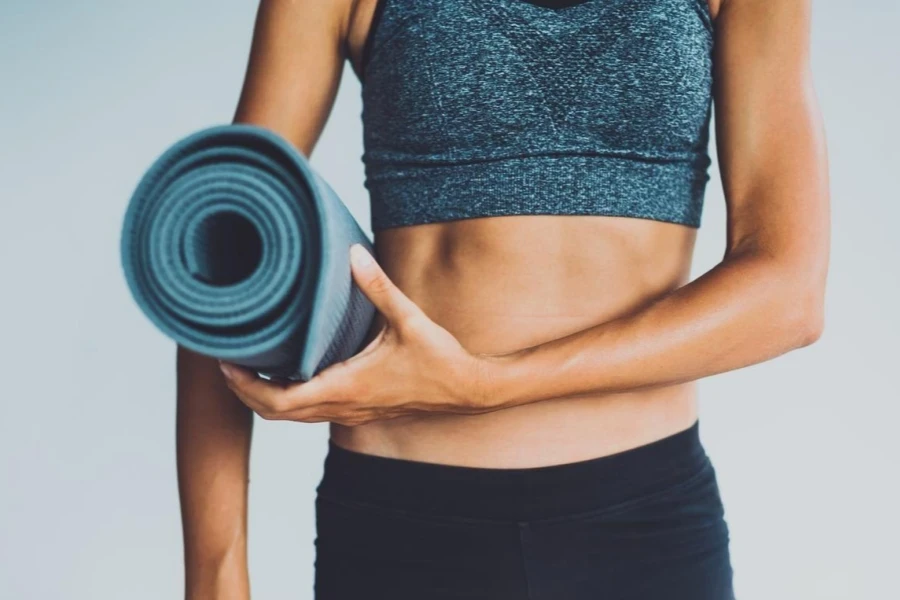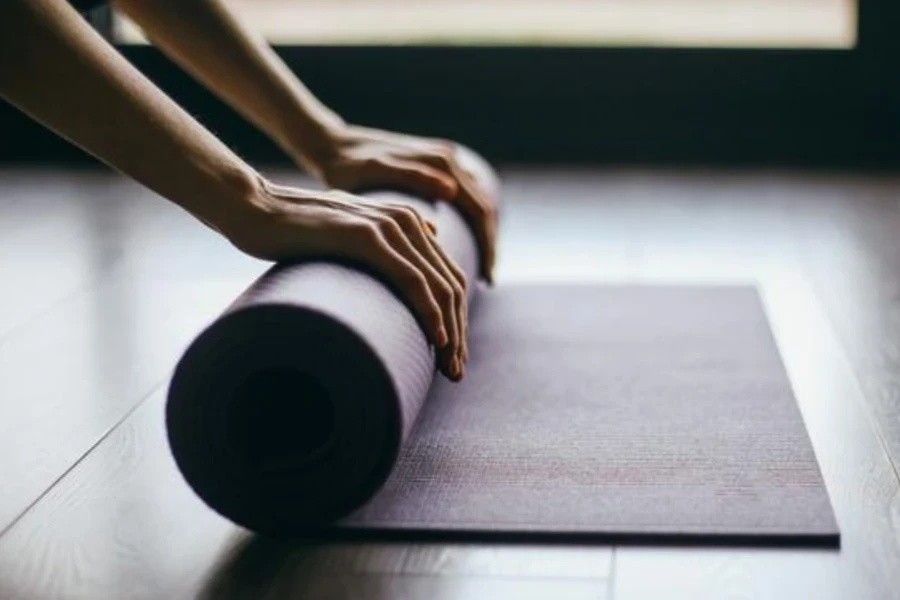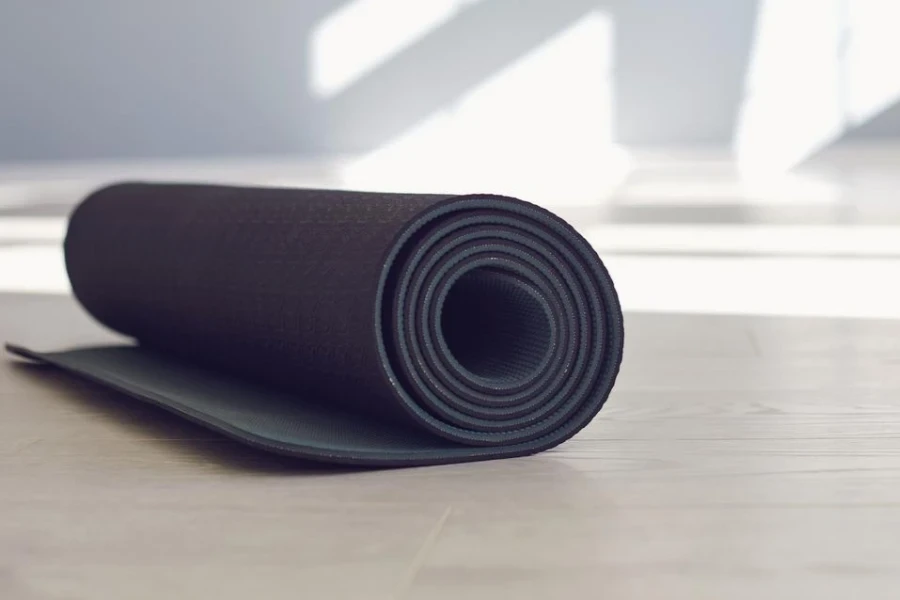Table of Contents
● Introduction
● Key types and their uses
● Trends shaping the yoga mat market
● Critical factors for selecting the right mat
● Leading yoga mats for 2025 and their standout features
● Conclusion
Introduction
In today’s fitness landscape, yoga mats have become accessories not just for yoga enthusiasts but for anyone practicing fitness activities that demand comfort and stability at their core. As fitness trends continue to evolve, so does the need for mats that provide superior grip, long-lasting durability, and enhanced comfort levels overall. The perfect yoga mat has many benefits, from safeguarding joints during high-intensity workouts to ensuring a slip-free experience, especially in heated settings. With advancements in materials and design, choosing the right mat for 2025 could make a real difference in performance support and durability moving forward. Opting for wisely selected mats guarantees a blend of comfort and durability that effortlessly caters to the varying requirements of individuals engaging in various exercise routines.
Key Types and Their Uses

Natural rubber mats: Eco-conscious performance
Eco-friendly natural rubber mats are highly sought after due to their sourcing and exceptional performance benefits in activities such as hot yoga that require durability and stability under high-demand conditions. These mats are crafted from materials that offer superior grip levels, especially in heated environments where moisture is present, ensuring a secure and safe practice experience. Their sturdy composition ensures longevity despite being slightly heavier and emitting an initial scent. Natural rubber mats deliver outstanding support and cushion for joints, making them a preferred option for environmentally conscious yogis.
PVC mats: Versatile and budget-friendly
Many people opt for PVC mats due to their cost-effectiveness and adaptability, making them great for newcomers or individuals engaging in yoga practices that are lighter. They provide a cushioned surface that eases pressure off joints during floor exercises, and their smooth textured design ensures stability. These mats are easy to carry around and budget-friendly; however, they are not as environmentally friendly as other options.
Cork mats: Sustainable and slip-resistant
Using cork mats is considered a quality and environmentally friendly option due to their renewable and biodegradable properties. These mats are highly effective in providing top grip levels when exposed to moisture conditions, making them perfect for activities such as hot yoga. Moreover, the natural antimicrobial features of cork ensure that the mats stay clean and free from odors, while the moderate cushioning offers a sturdy surface for practice. While they may cost more than other options available in the market, they are a wise investment for individuals who value performance and eco-friendliness. This is mainly due to their sustainability, long-lasting durability, and easy maintenance requirements.
Trends Shaping the Yoga Mat Market

As of 2023, the yoga mat market was estimated at $15 billion, and industry experts anticipate it will surge to $23 billion by 2032. The growth is expected to happen at an annual rate of 4.9% from 2024 to 2032, per the Market Research Report titled “Global Yoga Mat Market Analysis & Forecast 2023 2032.”
The market for yoga mats is changing to prioritize eco materials due to consumers’ growing emphasis on sustainability. There is a rising demand for mats crafted from natural rubber, cork, and thermoplastic elastomer (TPE) sources. These materials offer excellent durability and grip and also help minimize the environmental footprint. Cork mats are popular for their antimicrobial properties and ability to decompose naturally. Natural rubber from renewable rubber trees performs well in moisture-rich settings like hot yoga practices. TPE presents a recyclable option in this evolving landscape of eco-conscious yoga equipment. The move towards using sustainable materials is changing the market landscape as companies responsibly adopt environmentally friendly designs to match worldwide environmental trends.
In the world of yoga mats today, a new trend is taking hold: tech mats that connect with fitness apps and gadgets. Equipped with sensors, these mats track your body’s alignment, the accuracy of your poses, and even your heart rate in real-time. They offer tailored feedback to elevate your yoga sessions, appealing to those seeking a data-driven fitness approach, especially when practicing at home. The increasing interest in in-home fitness options is fueling the popularity of these yoga mats, which are projected to become more widely used by blending classic yoga practices with contemporary technology to offer enhanced convenience and accuracy.
Critical Factors for Selecting the Right Mat

Material composition and environmental impact
The quality of a yoga mat greatly depends on what it is made of, and it not only affects its performance and durability but also its impact on the environment. Nowadays, natural rubber and cork are top choices because they are eco-friendly materials that have replaced less sustainable options such as PVC. Natural rubber gives a better grip and lasts long, while cork is both renewable and biodegradable, offering a combination of sustainability and performance. Even though TPE is synthetic, it is recyclable and serves as a lightweight option for those looking for easy portability. The move towards using eco-materials also signifies a rising pattern in the sector to lessen environmental impacts while offering top-quality products.
Grip and texture for stability
Good grip and texture are crucial for maintaining stability and safety in yoga sessions, especially in challenging practices such as hot yoga. The surface texture of a mat plays a role in its performance during poses; certain materials provide improved traction when wet or in humid conditions. Mats featuring a rubber or cork surface are known for their excellent grip capabilities, which aid in balancing and reduce the risk of slipping between different poses. The mat’s texture also influences how it feels when you use it during workouts. It offers various levels of resistance that suit different workout intensities and individual preferences to assist users in keeping the correct posture and preventing injuries.
Thickness and comfort for joint support
The thickness of a yoga mat plays a big role in how comfortable it feels during your practice, especially for people with sensitive joints or those who do a lot of poses on the floor for a long time. Thicker mats (around 5mm to 8mm) give more cushioning and are great for poses that involve kneeling or sitting for an extended period. The padding helps protect your knees and wrists from hard floors and makes your practice more enjoyable and cozy. Buyers must select mats with a favorable thickness because excessively thick ones may affect balance during standing poses. Finding the right balance between support and stability is crucial to meet the practice’s unique requirements.
Leading Yoga Mats for 2025 and Their Standout Features

Optimal grip for hot yoga
High-quality yoga mats are a must-have for yoga and intense workouts in humid conditions, like those with natural rubber or cork that excel even when wet. These mats provide stability during poses in heated settings and appeal to eco-conscious buyers due to their sustainable materials. They are highly favored by individuals looking for a yoga accessory that can effectively absorb sweat while still providing a good grip, thus combining functionality and environmentally friendly features in their practice.
Affordable comfort
Affordable yoga mats that offer comfort are perfect for beginners or anyone seeking versatility at an affordable price without compromising quality. These mats typically have a thicker construction to provide sufficient cushioning for various yoga styles and workout routines while maintaining good grip and durability. For those who are new to yoga or looking for a versatile mat option that combines comfort with performance at a reasonable cost, these choices provide a well-rounded mix of features that cater to various preferences and needs in a user-friendly manner.
Superior comfort for joint support
Pads created to offer support for joints stand out for their added thickness and soft yet firm build that is perfect for individuals with delicate knees or wrists. These varieties offer better padding for extended periods spent in training while positioned close to the ground surface without compromising stability during upright stances. Their comfortable texture and capacity to uphold the body in workout sessions have made them a favored option for those who value comfort and durability.
Conclusion

Picking the finest yoga mat involves considering the kind of material used and how long it is expected to last depending on your specific needs and preferences. Current trends are leaning towards eco-friendly materials and advanced features. Mats created from natural rubber, cork, or TPE are great choices for various purposes, such as supporting joints in hot yoga or just feeling comfortable. Striking a balance between grip, padding, and durability guarantees that your selected mat will deliver consistent performance during different yoga sessions. Focusing on the right features based on personal preferences and needs ensures the yoga mat becomes a crucial accessory in improving your fitness journey.



